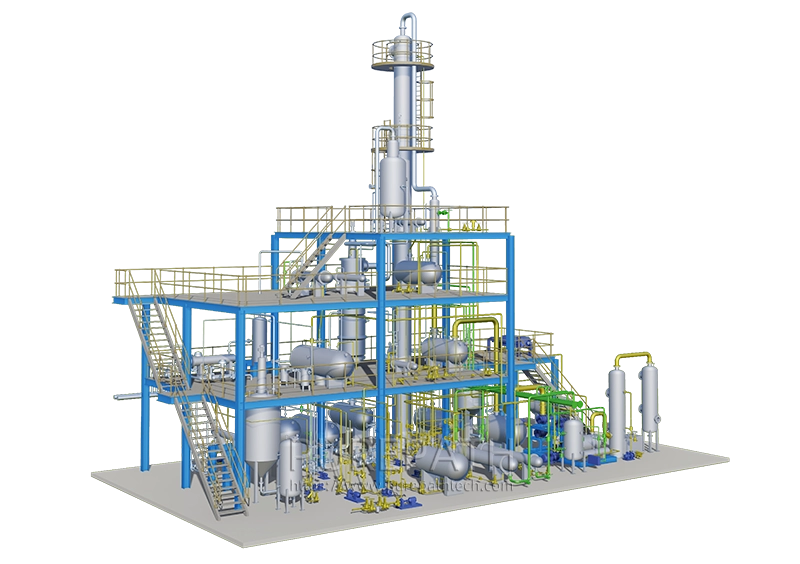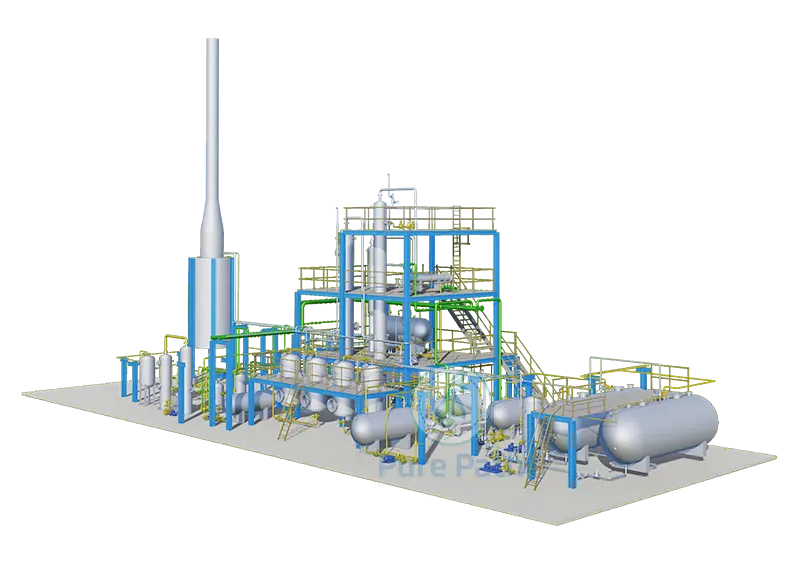Comparing Waste Oil to Diesel Technologies
The world is increasingly looking for sustainable solutions, and Waste Oil to Diesel technology offers an excellent way to transform used oil into a valuable fuel source. However, with various Waste Oil to Diesel processes available, choosing the right technology can be daunting. This guide explores the different Waste Oil to Diesel options, compares their efficiency and output, and helps you select the best fit for your needs.
Types of Waste Oil to Diesel Technologies
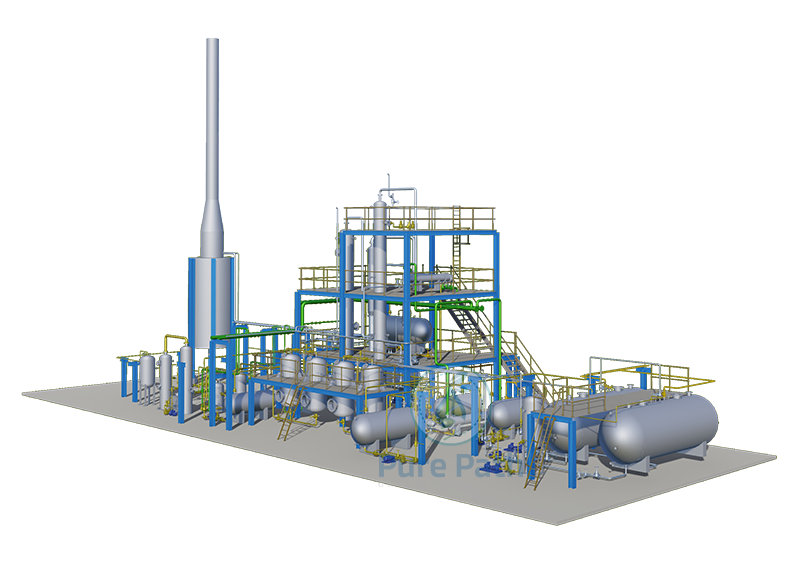
Waste oil to diesel technology mainly includes the following types:
1. Hydroprocessing: Hydroprocessing is a widely used technology for converting waste oil into diesel-like compounds. It involves the use of hydrogen and catalysts to remove impurities from waste oil and break down large hydrocarbon molecules into smaller ones. Operating at high temperatures and pressures, hydroprocessing yields high-quality diesel-like fuels suitable for various applications, including transportation and industrial use. However, the high energy requirements and initial capital investment can be significant drawbacks.
2. Pyrolysis: Pyrolysis is a thermal decomposition process that involves heating waste oil in the absence of oxygen. This causes the oil to break down into smaller molecules, including diesel-like compounds. Pyrolysis operates at lower temperatures compared to hydroprocessing, making it a potentially more energy-efficient option. However, the quality of the diesel-like fuel produced through pyrolysis may vary depending on the process parameters and feedstock characteristics.
3. Transesterification: Transesterification is a chemical process used primarily for producing biodiesel from waste oil. It involves reacting waste oil with alcohol (such as methanol or ethanol) and a catalyst (such as sodium hydroxide or potassium hydroxide) to convert triglycerides present in the oil into fatty acid methyl or ethyl esters, commonly known as biodiesel. While biodiesel is not exactly diesel, it can be blended with diesel fuel or further processed to improve its properties for use in diesel engines.
4. Catalytic Depolymerization: Catalytic depolymerization is a process that breaks down long-chain hydrocarbons present in waste oil into shorter-chain hydrocarbons resembling diesel. This technology utilizes catalysts to facilitate the chemical reactions involved in the depolymerization process. While catalytic depolymerization offers the potential for high conversion efficiencies, it may require careful catalyst selection and management to optimize performance and minimize byproducts.
5. Thermal Depolymerization: Thermal depolymerization involves subjecting waste oil to heat and pressure to break it down into smaller hydrocarbons, including diesel-like fuels. This process can operate at moderate temperatures and pressures compared to hydroprocessing, making it potentially more cost-effective. However, achieving desired product yields and quality may require precise control of process conditions and feedstock composition.
6. Supercritical Fluid Extraction: Supercritical fluid extraction (SFE) is a method that utilizes a supercritical solvent to extract valuable components from waste oil. By adjusting temperature and pressure conditions, certain hydrocarbons resembling diesel can be selectively extracted from the waste oil mixture. While SFE offers the advantage of being a clean and efficient process, it may require specialized equipment and careful solvent management.
Each technology has its own characteristics and scope of application. Which technology to choose depends on factors such as the type of waste oil, treatment costs, and environmental protection requirements. In general, waste oil to diesel technology is an effective resource recovery and environmentally friendly treatment method, which helps reduce the impact of waste oil on the environment and can also bring economic benefits.
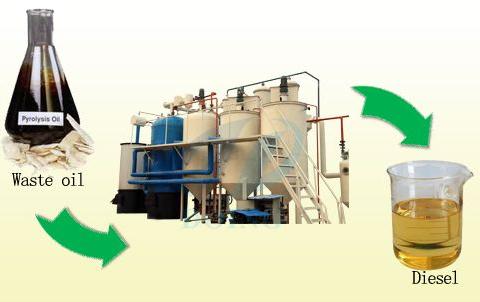
Comparison of Waste Oil to Diesel Technologies
When considering the conversion of waste oil into diesel fuel, it’s essential to weigh the strengths and limitations of each technology to make an informed decision. Here’s a more detailed comparison:
| Technology | Strengths | Limitations |
| Hydroprocessing | High efficiency in removing impurities. Produces high-quality diesel-like compounds. Well-established technology. | Requires high temperatures and pressures, increasing energy consumption and operational costs. Use of catalysts and hydrogen adds complexity and cost. |
| Pyrolysis | Operates at lower temperatures, reducing energy requirements. Can handle a wide range of waste oils. | May produce lower-quality diesel-like compounds requiring further refinement. Output quality and consistency may vary based on feedstock composition. |
| Transesterification | Provides a pathway for producing biodiesel. Relatively simple process with basic equipment requirements. | Requires alcohol and catalysts, increasing process complexity and cost. Biodiesel may have different properties compared to conventional diesel, requiring engine adjustments. |
| Catalytic Depolymerization | Efficient in breaking down long-chain hydrocarbons. Offers flexibility in processing various waste oils. | Requires catalysts and specific operating conditions for optimal results. Operational costs may be higher due to catalyst usage and maintenance. |
| Thermal Depolymerization | Can handle a wide range of waste oils and feedstocks. Relatively straightforward process with minimal pre-treatment requirements. | Output quality may vary depending on feedstock and operating conditions. Energy-intensive process requiring high temperatures and pressures. |
| Supercritical Fluid Extraction | Offers a clean and efficient method for extracting diesel-like compounds. Can be tailored for specific compound extraction. | Requires specialized equipment and expertise, leading to higher upfront costs. Efficiency may be influenced by factors such as feedstock composition and solvent properties. |
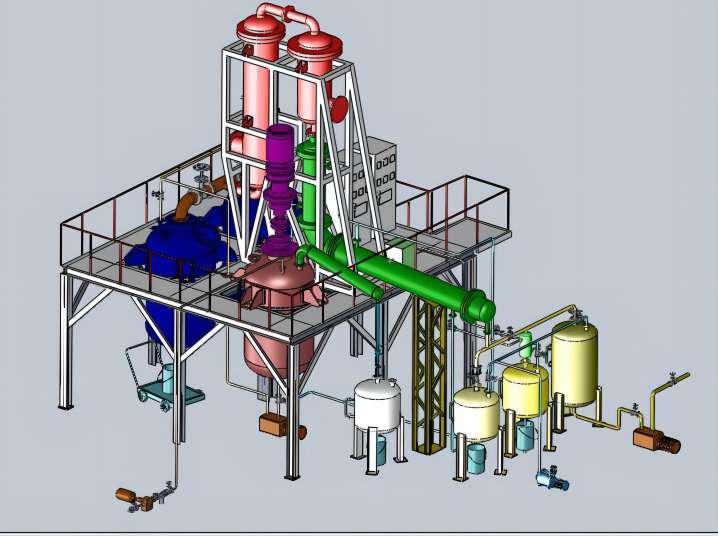
Choosing the Right Waste Oil to Diesel Machine
Purpath offers Waste Oil to Diesel plants that utilize a pyrolysis process to transform waste oil into usable diesel fuel. Pyrolysis breaks down the long-chain hydrocarbons present in waste motor oil into valuable diesel fuel.
1. Environmentally Friendly Solution:
Purpath’s technology tackles the growing problem of waste oil by transforming it into a valuable resource, reducing reliance on landfills and improper disposal methods. The diesel produced by Purpath’s plant meets Euro-V emission standards, signifying a cleaner burning fuel compared to traditional diesel derived from crude oil.
2. Efficient Pyrolysis Process:
Purpath’s plant boasts versatility, capable of processing various types of waste oil, including used motor oil, waste gear oil, waste crankcase oil, and even tire pyrolysis oil. While pyrolysis generally yields a range of byproducts, Purpath’s technology optimizes the process to deliver a significant percentage of the output as diesel fuel meets strict quality standards.
3. Operational Advantages:
Purpath Waste Oil to Diesel plant is known for its user-friendly design, making it easier to operate and maintain compared to some complex WTD technologies. The plant’s efficient design and process can contribute to lower operational costs, making it a potentially attractive investment. Purpath offers a range of plant capacities, allowing you to choose the size that best suits your waste oil processing needs and desired diesel output.
In addition, Purpath prioritizes safety in its plant design, incorporating features to minimize operational risks. We offer technical support and training to ensure smooth operation and maximize the plant’s efficiency.
Generally, Purpath’s Waste Oil to Diesel plant presents a compelling option for businesses and organizations seeking to manage waste oil responsibly while creating a valuable clean-burning fuel source. For further information or to explore if a Purpath Waste Oil to Diesel plant is the right fit for your needs, consider contacting Purpath Technologies directly.
Conclusion
Converting waste oil into diesel fuel presents a promising solution for waste management and energy sustainability. By understanding the various technologies available, comparing their strengths and weaknesses, and carefully selecting the right plant for conversion, businesses can contribute to a greener future while achieving economic viability. Invest in the right waste oil to diesel technology today and pave the way for a cleaner tomorrow.


